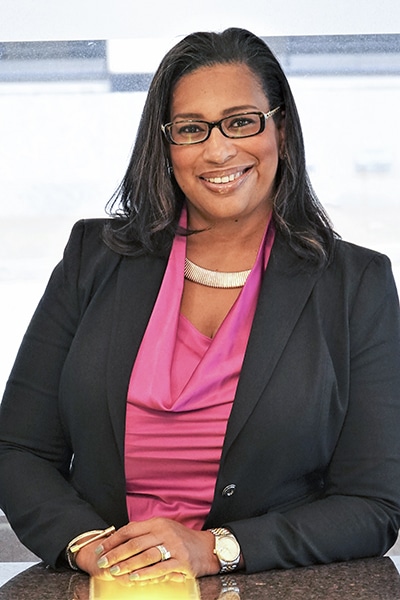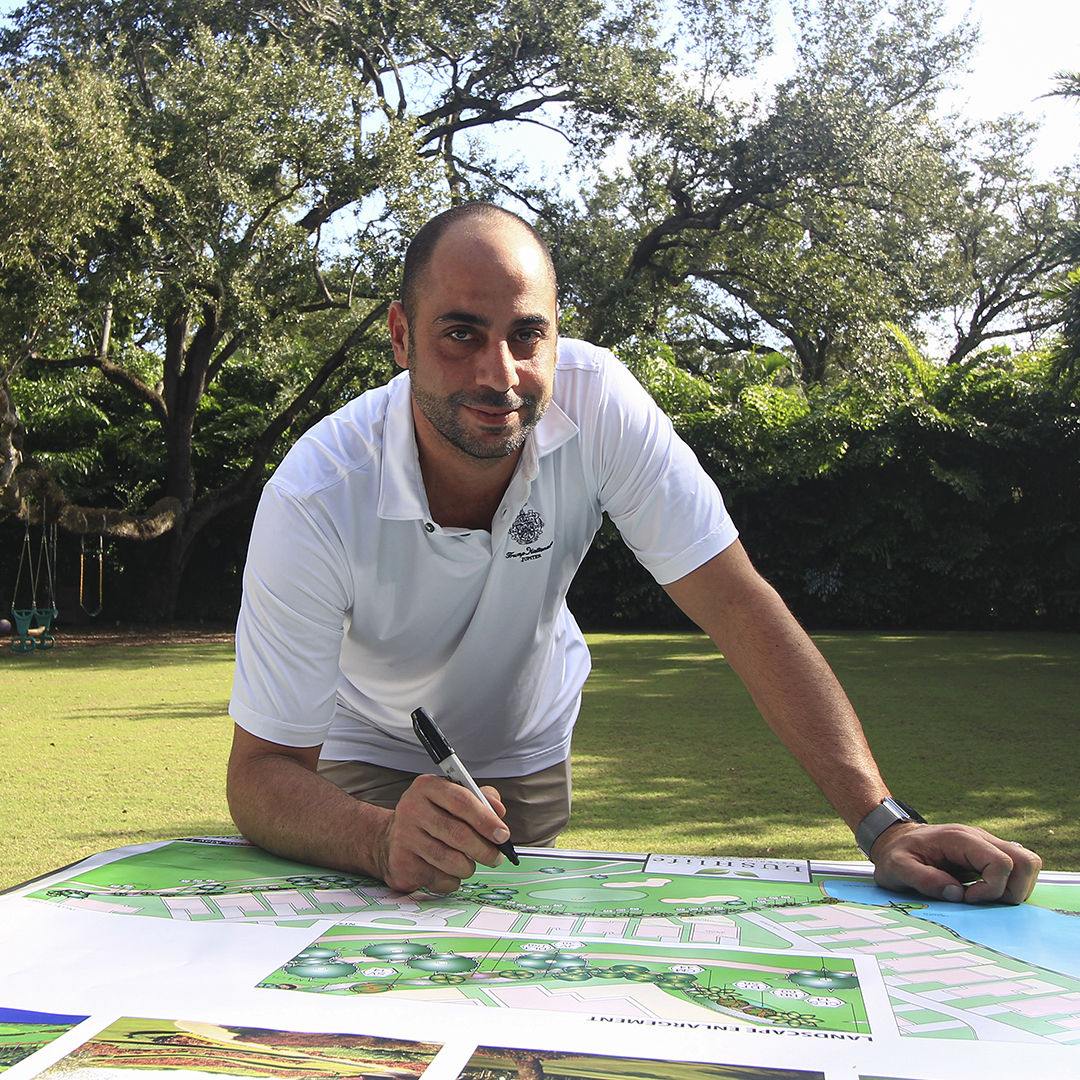|
Getting your Trinity Audio player ready...
|
Guests staying in the Courtyard Marriott in downtown San Francisco are in for a shock when they open their room’s closet door. The interior walls of the storage space are covered with black and white coverings depicting human faces. “Some people like it,” says Meridith Zimmerman, vice president of design for RLJ Lodging Trust, which owns the property. “Others are a little scared because they are not expecting it.”

That’s what Zimmerman calls a “closet surprise”—a distinctive wall covering or pop of color—featured in her designs. It’s one way that Zimmerman puts her stamp on RLJ projects, bolstering her chief goal of creating “hotels that people remember.” With hotel brand design standards and budgets prescribing design concepts, such unique touches may be subtle, but they are central to the hospitality design veteran’s approach.
Some of RLJ’s properties, particularly those in urban areas, have more generous budgets that allow for more custom designing. For example, a 600-room Marriott hotel in Louisville, Kentucky, includes a room dedicated to the display of one of the state’s most famous products: bourbon.
Zimmerman loves the opportunities to include such custom elements in her designs, but she also takes great pride in the small touches that distinguish properties within the boundaries of standards established by hotel brands. Zimmerman has relished opportunities to add flourishes of creativity since she discovered a passion for hospitality design early in her career.
Before she embarked on her chosen career track, though, she faced a potential derailment—a fateful conversation with her design professor as an undergraduate at the University of South Carolina. The professor spoke about the difficulty that budding architects faced in passing the American Institute of Architects (AIA) certification test. “‘Many fail no matter how many times they take the test,’” she recalls the professor saying. “‘That’s why women shouldn’t be architects.’”
It was a harsh indictment from a woman professor, no less. Instead of letting that opinion dissuade her from pursuing an architecture career, though, Zimmerman took it as a charge to move forward. “Because a woman said it, I was even more determined,” she recalls.
During that period, a college internship with a firm that worked in the hospitality industry opened her eyes to the possibility of working in that arena. “Before that, I had no idea about designing for the hotel industry,” she says. “In my mind, interior design was all about designing for homes.”
Zimmerman went on to earn her master’s degree in architecture at The Catholic University of America in Washington, DC. As it turned out, she opted not to take the AIA exam because she found a career path that didn’t require it. Nevertheless, she has certainly used her architectural education to the fullest. Her first professional positions as a designer and construction manager were in the office real estate and apartment realm. Later, during a four-year stint as a designer/project manager for Marriott International, her love for hospitality design burgeoned. Delving into the nuts and bolts of hotel work made her realize that she “loved making hotels come to life.”
Working for the global hotel giant made her feel like she had made the big time, and also gave her perspective of what it’s like to work from the corporate side, which helps inform her work with RLJ today. While at Marriott, she was mystified over why franchise owners sometimes chafed at the design standards she and her colleagues were charged with enforcing. Why couldn’t they understand the importance of design specifications across properties bearing the same name?
But after Zimmerman made the move to RLJ, which owns 103 hotels of multiple brands in 23 states and the District of Columbia, things looked different. “In the ownership seat, I see why owners got angry or didn’t understand why we had some of the standards,” she says. There are instances when she might want to substitute materials to save money in one area and redirect to another, such as more elaborate millwork to add a special touch to a lobby. When that option is not possible, she may turn to a less expensive alternative such as distinctive artwork from a local artist—something to make the space memorable.

Zimmerman gets to exercise more of her creativity on some urban hotels that have more generous budgets than suburban counterparts. For example, a Courtyard Marriott located on Chicago’s Magnificent Mile towers far higher than the brand’s typical four-story prototype. “It’s almost a full-service hotel with full restaurant service and a Starbucks,” she says. In fact, the elegantly apportioned Copper Fox Dining Room even attracts patrons not staying at the hotel—highly unusual for the Courtyard brand.
COVID-19 drastically curtailed business in 2020, derailing most of the projects her company had scheduled. But she is particularly enthused over planning a makeover of a new RLJ property in southern California. The Oxnard Embassy Suites Mandalay Beach near Santa Barbara will undergo a major redevelopment. The beachside property will be converted to the more upscale Curio brand—what Zimmerman calls a “soft brand that is more boutiquey and upscale.”
Most of the public spaces will be reimagined—an indoor bar that abuts the beach will be transformed into an indoor/outdoor space, for example. Likewise, the grounds will be updated to accommodate more recreational activities. The site is already popular, hosting about 50 weddings a year. The project is a step in RLJ’s new strategy to add more upscale properties to its portfolio.
Zimmerman is excited to lead the design effort for this initiative. It will allow her to exercise her creativity to the fullest. Other properties won’t be neglected, by any means, though. She will continue to add her mark to all of RLJ’s properties when they are scheduled to be refreshed, demonstrating her drive to design hotels that make a lasting impression on travelers.


